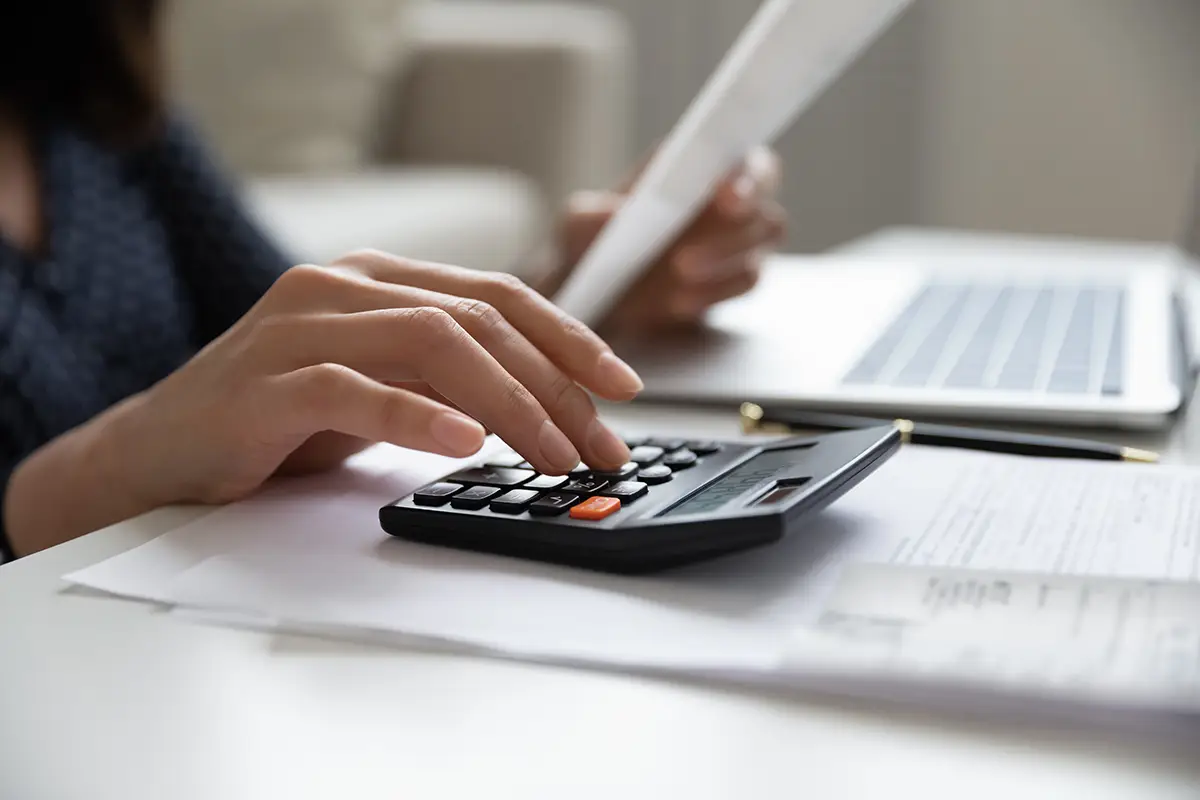Hoping to buy your dream home in the near future? Once you’ve determined how much mortgage you can afford, it’s time to save for your down payment! How much you need for a down payment depends on multiple factors, including the total price of the home and what kind of loan you’re considering, but it’s important to have a solid savings goal in mind as you begin the process. Luckily, there’s a myriad of creative ways to save money for a down payment. Here are a few ideas to get you started:
- Open a high-yield savings account. Before you begin saving, it’s important to figure out where you’ll keep the money for your down payment. Generally, it’s a good idea to keep this money separate from your other savings, and in a place where you won’t be tempted to spend it. High-yield savings accounts (HYSAs) are an excellent option for this—you can keep your down payment funds in a dedicated account, as well as enjoy the higher than average interest rates of an HYSA. The interest you earn can only help to increase your total savings, putting your goal of homeownership even more in reach! When researching potential accounts, be sure to pay attention to their annual percentage yield (APY), monthly fees and minimum deposit requirements.
- Join a “Buy Nothing” group. Spending less is a key part of saving money, but it’s easier said than done! One clever way to make this more attainable is by joining a “Buy Nothing” group. These groups can be found in cities across the country, both online and in-person, and they offer a space where participants can gift, lend and share items with other members of their community. Not only does this allow you to find items for free, but it also provides a great opportunity for giving away things you no longer need (which can come in handy especially if you’re decluttering before a big move!). The Buy Nothing Project, a nonprofit organization credited with popularizing this movement, even created a helpful app for finding and connecting with groups in your area.
- Wait for 48. If you’re serious about cutting down on your spending, this trick may come in handy. Next time there’s a non-necessity item you’re thinking about buying, hold off on making the purchase for 48 hours. If, at the end of the two days, you’ve either forgotten about the item or are no longer excited about it, that might be an indication that you didn’t really need to make the purchase. To make this strategy even more beneficial, you can take the money you would’ve spent on that item and instead put it in your down payment savings account. Sometimes, creative ways to save money can be simple!
- Embrace wallet-friendly alternatives. For the things you do decide to spend money on, be sure to research and consider less expensive (or even free!) options. Borrowing from the library, for instance, is a great alternative to purchasing a book. If filling up your car’s gas tank is getting too pricey, carpooling, biking and taking public transportation are all budget-conscious options for your commute. Planning a date with your loved one? Skip the fancy dinner out and instead make a gourmet meal at home, followed by a movie or game night from the comfort of your own living room.
- Start a side gig. If spending less is one side of the coin, earning more is the other. While it’s not always practical to find a completely new job (especially if you might apply for a home loan in the near future), there are plenty of ways you can make additional income on the side. Enjoy crafting? Consider selling your creations online or at a local makers market! Or, if you have a marketable skill such as writing, graphic design, photography or something similar, you may be able to find freelance projects to earn extra money on your own schedule. Other options might include pet sitting or walking, driving for a rideshare company, tutoring or becoming a user tester for websites or apps.
- Use the envelope system. There are many creative ways to save money and stick to a budget, but the envelope system can be a great way to prevent overspending. You’ll first determine your monthly income, then subtract any fixed expenses (think rent, utility bills, insurance), savings and debt payments. The amount left over is how much you can spend on other expenses that month. These expenses can be divided into various categories, like groceries or personal care, and you’ll break your total amount into smaller spending caps for each. You can either use real envelopes for every budget line and keep cash inside of them or, if you prefer not to use cash, you can create virtual “envelopes” in an app or on a spreadsheet. The key is to spend no more than the amount that’s in the envelopes and, if there’s any money leftover at the end of the month, you can add it to your down payment fund.
- Save your tax refund. As tax season rolls around, you’re probably thinking about what to use your refund on—why not put it toward your dream home? Even though it likely won’t cover your entire down payment, the refund could considerably boost your savings and move you that much closer to your goal. You could even set aside that amount for closing costs.
Note!
Although it’s generally seen as desirable to have a larger down payment, that’s not the only option for every buyer. Homebuyers with good credit typically only need to put 3.5% down for a loan, a savings goal that might seem much more attainable. It’s important for you to weigh the pros and cons of waiting to save up for a larger down payment, as compared to putting less money down and becoming a homeowner (and possibly starting to build equity) sooner.
If you’re interested in learning more about down payments, creative ways to save money and preparing to buy a home, take a look at these helpful articles:
- Five Financial Wellness Tips to Help you Land your Dream Home in 2024
- The Benefits of Pre-qualifying for a Mortgage
- How to Shop for a Mortgage Without Hurting Your Credit (Much)
- Mortgage Infographic: Get Your Credit Ready Before You Apply
8 Credit Score Management Tips
Applying for a mortgage soon? Our 8 Credit Score Management Tips could help put you on the path to better rates!





